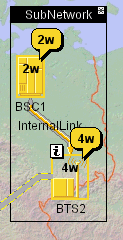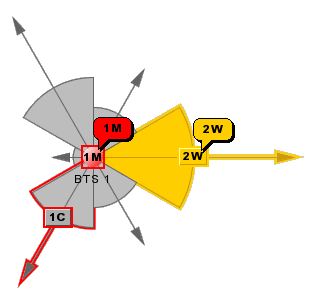Business objects and data sources
JViews TGO graphic components communicate with the back-end application from which they obtain data to be displayed through a data source. The role of the data source is to transform data retrieved from the back end to objects that
JViews TGO can handle. These objects, known as
business objects, can be represented in any of the
JViews TGO graphic components.
Business model and business classes
Business objects are instances of business classes, which are described by a
business model. The business model translates back-end data into classes that
JViews TGO can easily manipulate. It describes inheritance between these classes, along with their associated attributes.
Business classes and their instances are dynamic, which means that you can modify them and add new attributes at run time. As a consequence, you do not have to recompile your application for modifications to be taken into account.
Business classes can be defined directly in XML.
Data sources
Data sources are connecting objects that form a bridge between the back end and the front-end application or GUI. They transform data retrieved from the back end into business objects that will then be rendered as graphic objects at the level of the graphic components.
JViews TGO provides a default implementation of the data source that directly plugs in to XML files or streams or to JavaBeans™. On the other side, the same data source can be connected to multiple graphic components, allowing you to have different views of the same data with a consistent appearance.
You can specialize the data source to connect to other types of back end, such as Java™ Naming and Directory Interface (JNDI), or any other kind of back-end application.
Predefined business objects
JViews TGO comes with a library of predefined business objects that are specifically designed to help you build, with a minimum of effort, high-quality and user-friendly user interfaces in the domain of telecom network management.
Examples of these objects are network elements, Base Transceiver Stations (BTS), links, cards, shelves, ports, and many more. JViews TGO also supplies a complete library of graphic symbols, icons, and decorations for representing changes in telecommunication business object states and alarms. State and alarm representations comply with the most widespread telecommunication standards, such as OSI, Bellcore, SONET, and SNMP.
Predefined business objects can be defined either in an XML file or through a specific API. You simply add these objects to the data source to display them with a homogeneous, high-quality look and feel and with associated decorations (such as alarm balloons or status icons) across all the predefined JViews TGO components.
The following figures show a few examples of the way some of the JViews TGO predefined business objects are graphically rendered in components.
Copyright © 2018, Rogue Wave Software, Inc. All Rights Reserved.



